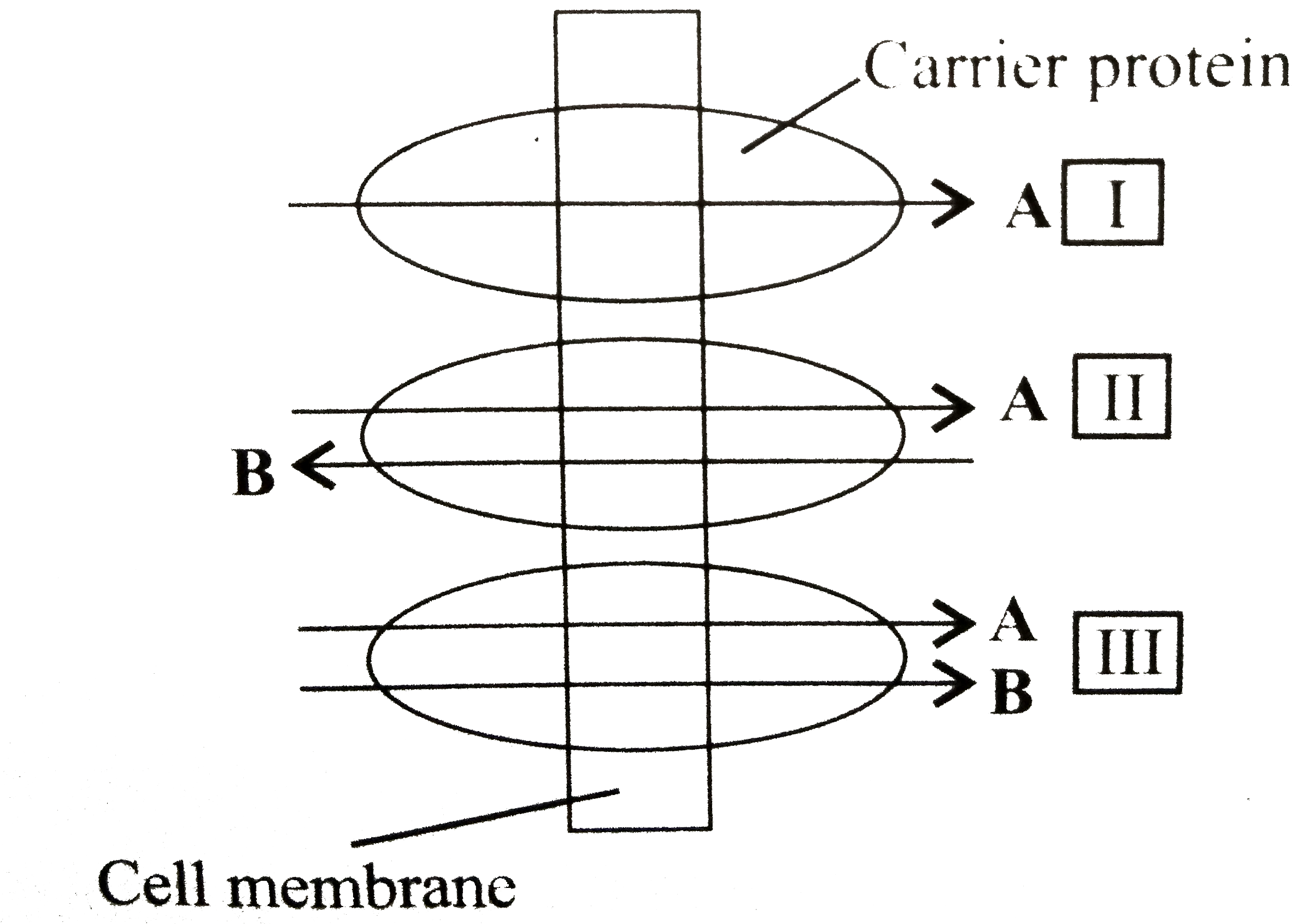What is facilitated diffusion ?
Step-by-Step Solution:
1. Understanding Transport Mechanisms:
- There are two main types of transport across cell membranes: passive transport and active transport.
2. Defining Passive Transport:
- Passive transport involves the movement of substances from an area of high concentration to an area of low concentration without the use of energy (ATP).
3. Types of Passive Transport:
- Passive transport can be further divided into two types: simple diffusion and facilitated diffusion.
4. Explaining Simple Diffusion:
- In simple diffusion, non-polar substances can easily pass through the cell membrane, which is primarily composed of a phospholipid bilayer that is non-polar in nature.
5. Introducing Facilitated Diffusion:
- Facilitated diffusion is similar to simple diffusion in that it also involves the movement from high concentration to low concentration, but it specifically pertains to polar substances.
6. Role of Proteins in Facilitated Diffusion:
- Since the cell membrane is non-polar, polar substances require assistance to cross it. This assistance is provided by channel or tunnel proteins embedded in the cell membrane.
7. Defining Facilitated Diffusion:
- Thus, facilitated diffusion can be defined as a type of passive transport where large-sized polar molecules move from an area of high concentration to an area of low concentration through specific channel or tunnel proteins.
Final Definition:
Facilitated diffusion is a passive transport mechanism that allows large-sized polar molecules to cross the cell membrane from high concentration to low concentration with the help of channel or tunnel proteins.
---
- There are two main types of transport across cell membranes: passive transport and active transport.
- Passive transport involves the movement of substances from an area of high concentration to an area of low concentration without the use of energy (ATP).
- Passive transport can be further divided into two types: simple diffusion and facilitated diffusion.
- In simple diffusion, non-polar substances can easily pass through the cell membrane, which is primarily composed of a phospholipid bilayer that is non-polar in nature.
- Facilitated diffusion is similar to simple diffusion in that it also involves the movement from high concentration to low concentration, but it specifically pertains to polar substances.
- Since the cell membrane is non-polar, polar substances require assistance to cross it. This assistance is provided by channel or tunnel proteins embedded in the cell membrane.
- Thus, facilitated diffusion can be defined as a type of passive transport where large-sized polar molecules move from an area of high concentration to an area of low concentration through specific channel or tunnel proteins.
Facilitated diffusion is a passive transport mechanism that allows large-sized polar molecules to cross the cell membrane from high concentration to low concentration with the help of channel or tunnel proteins.
Topper's Solved these Questions
- TRANSPORT IN PLANTS BOOK - AAKASH INSTITUTE ENGLISHCHAPTER - TRANSPORT IN PLANTS EXERCISE - Try Yourself (Fill in the blanks )
20 Videos
- TRANSPORT IN PLANTS BOOK - AAKASH INSTITUTE ENGLISHCHAPTER - TRANSPORT IN PLANTS EXERCISE - Try Yourself (Determine whether the following statements are true or false )
1 Videos
- THE LIVING WORLDBOOK - AAKASH INSTITUTE ENGLISHCHAPTER - THE LIVING WORLDEXERCISE - TRY YOURSELF
44 Videos
Similar Questions
Knowledge Check
The given figure shows transport of two molecules A and B through three different modes of facilitated diffusion. Select the correct option regarding it.
 AIIIIII(a)UniportSymportAntiportBIIIIII(a)UniportAntiportSymportCIIIIII(a)AntiportUniportSymportDIIIIII(a)AntiportSymportUniport
AIIIIII(a)UniportSymportAntiportBIIIIII(a)UniportAntiportSymportCIIIIII(a)AntiportUniportSymportDIIIIII(a)AntiportSymportUniport
Which of the following is not the type of facilitated diffusion?
View SolutionSelect an incorrect statement for facilitated diffusion and active transport
View SolutionSimple as well as facilitated diffusion both (correct one) –
View SolutionFacilitated diffusion involve
View SolutionSelect an incorrect statement for facilitated diffusion
View SolutionA special type of facilitated diffusion related to movement of solvents only through living systems is called
View SolutionSynthesis of ATP by enzymes present on thylakoids does not involve
(a) a transmembrane channel
(b) change in confirmation of F1
(c) facilitated diffusion of protons across the membrane
(d) diffusion of electrons along with protons back to the stroma.
View Solution
